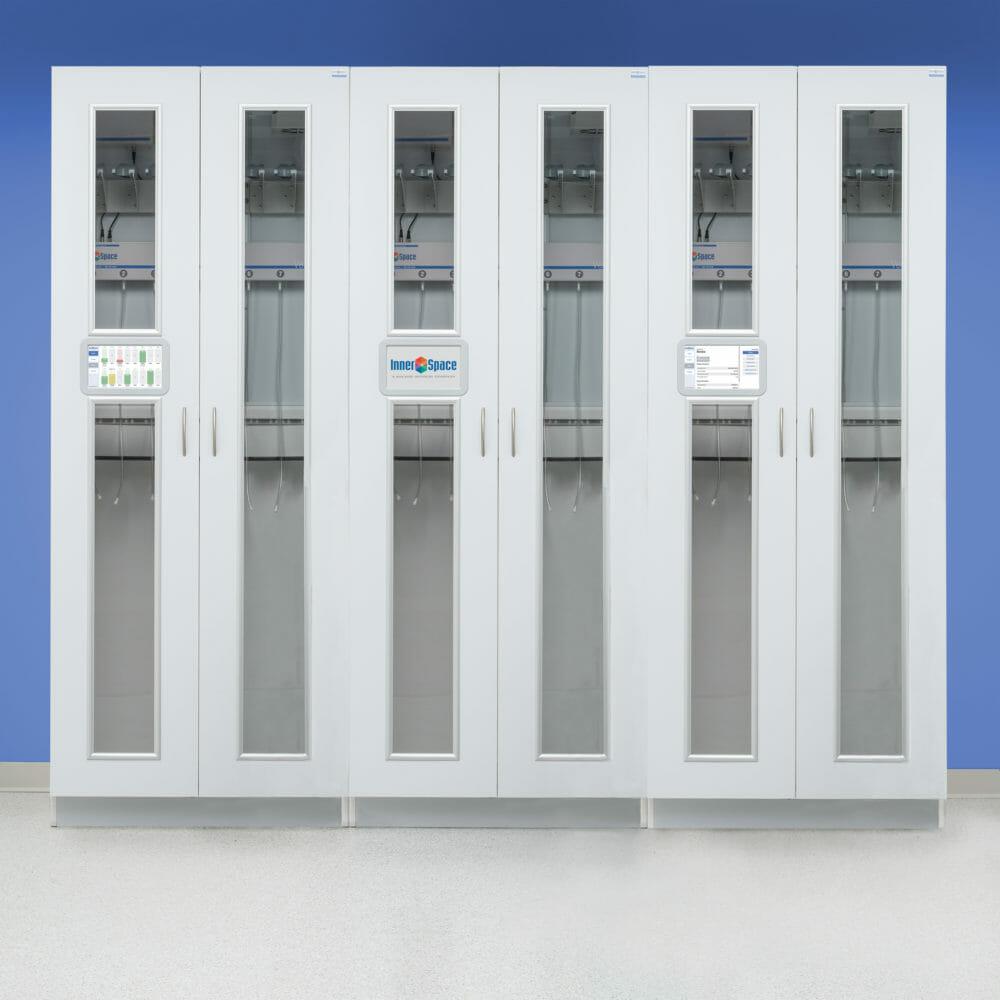
Why are leading organizations hyper-focused on endoscope reprocessing? How can endoscope drying and storage cabinets help reduce the risk of infection from reusable endoscopes?
Endoscope reprocessing continues to come under scrutiny as scientific studies conclude that the current standards, or lack thereof, are not enough to prevent patients from being infected with potentially harmful pathogens left behind after cleaning. An American Journal of Gastroenterology review of published studies from 2010 to 2020 found that almost 20% of reprocessed endoscopes were contaminated with microorganisms.
Some organizations calling for more stringent and standardized reprocessing protocols include the Association for the Advancement of Medical Instrumentation (AAMI), the Society of Gastroenterology Nurses and Associates, Inc., and the Centers for Disease Control and Prevention (CDC).
To understand the importance of safer reprocessing protocols, we need to know how much the U.S. healthcare system is spending on treating infections caused by inadequate endoscope cleaning processes.
The Cost of Contaminated Endoscopes
The CDC reports that antibiotic-resistant infections cost the U.S. healthcare system 4.6 billion dollars every year. Endoscopy International Open reported that the endoscope tops the list of medical devices associated with healthcare-associated infections.
Flexible endoscopes have narrow channels that are difficult to clean. Reprocessors are tasked with onerous cleaning instructions unique to each vendor and endoscope model. A lack of standardized reprocessing protocols leaves the burden of developing an endoscope reprocessing program to the individual facility or healthcare organization, potentially leading to substandard reprocessing systems.
Improper reprocessing can leave behind water droplets that allow the formation of biofilm, clusters of microorganisms that are known to contribute to antibiotic-resistant infections. Because biofilm may not be visible to the naked eye and is difficult to remove from clinical surfaces, reprocessing protocols must include techniques that prevent biofilm from developing on endoscope surfaces.
New AAMI Reprocessing Guidelines
To address the issue of endoscope-related antibiotic-resistant infections, AAMI recently published revised endoscope reprocessing guidelines, including recommendations concerning the drying and storage phase.
These guidelines include changes to cleaning protocols, upgraded training requirements including certifications, the recommendation for sterilization, and higher environmental standards for water and air quality.
The guidelines addressed the role that drying plays in reducing the risk of biofilm accumulation. Based on current research, AAMI recommends at least 10 minutes of continuous pressure air drying, either with medical-grade or HEPA-filtered air, until no moisture remains in or on the endoscope. Preferred storage cabinets provide positive-pressure air (HEPA-filtered or instrument air) circulation throughout the cabinet and endoscope channels, or HEPA-filtered positive-pressure air circulation through the cabinet without forced air through the endoscope lumens.
Meeting the New AAMI Guidelines: Endoscope Drying and Storage Cabinets Promote Better Infection Control
The Journal of Hospital Infection found that retained moisture provides an ideal environment for the proliferation of bacteria and the formation of biofilm, increasing the risk of recontamination during the drying process.
The design and functionality of drying and storage cabinets promote a hygienic environment that supports infection control processes and easier endoscope maintenance.
Faster Drying Times
Compared with standard drying cabinets, the American Journal of Infection Control reported that automated drying cabinets were found to significantly shorten the drying time of endoscope surfaces. Researchers found that automated drying and storage cabinets reduced drying time from:
- 24 hours to 3 hours on the external surfaces
- More than 24 hours to 1 hour on internal surfaces
Pressurized Medical-Grade or HEPA-Filtered Air
Contaminant-free air reduces the risk of introducing microorganisms during this final phase of cleaning and storage. The Association of periOperative Registered Nurses (AORN) recommends drying cabinets that provide clean air under pressure, either within an enclosed cabinet or throughout the cabinet and the endoscope channels.
A Protected, Enclosed Environment
The CDC recommends an enclosed cabinet to reduce the risk of contamination and damage. Cabinets should prevent dust contamination and keep endoscopes from touching horizontal surfaces.
New AAMI endoscope reprocessing guidelines and current research supports the adoption of safer endoscope drying processes. InnerSpace offers endoscope drying and storage cabinet solutions that meet these guidelines, helping you to promote safer standards within your facility.

Cindy Blye
Content WriterCindy Blye, BSN, RN, CCM is a Registered Nurse and Certified Case Manager. She is an Alumni of West Virginia University School of Nursing (BSN), and a member of the Association of Health Care Journalists and The Authors Guild.
